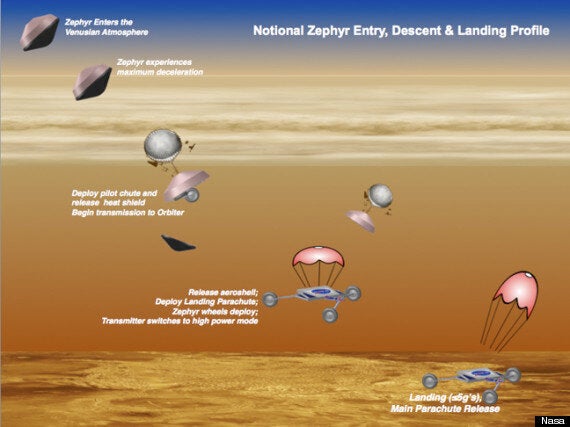
It's hard enough landing a rover on Mars, but when it comes to the other even more extreme landscapes of the Solar System, Nasa has to get creative.
We've already heard about how the space agency is thinking of using self-drilling submarines to explore the watery oceans of Europa. Now, thanks to Universe Today, we're learning more about a possible plan to drift a robot down onto the hellish surface of Venus.
Venus is an incredibly hostile place - at least for humans - covered as it is in a thick cloud of sulphuric acid, with the densest atmosphere of the four terrestrial planets and consisting mostly of carbon dioxide.
It's also hotter than an oven, with an atmospheric pressure 92 times that of Earth's.
To try and combat these elements and safely get a probe to the planet naturally takes some doing. But Geoffrey Landis of NASA's Glenn Research Center is working on it - and has some neat ideas.
The result of his work so far is the Venus Landsailing Rover ('Zephyr'). The craft would spend most of its time not moving on the ground, but when it needed to find a new spot it would deploy a sail and drift slowly to a new location, just 22 feet above the terrain. The idea is one way that a probe on Venus would overcome the technical challenge of trying to turn the high winds, temperatures and pressure on the planet to its advantage.

"So the fundamental elements of a rover for Venus are not beyond the bounds of physics," Landis observes, "we could survive the furnace of Venus if we can come up with an innovative concept for a rover that can move on extremely low power levels."
Take a look at how it works in the infographic above, or head over to Nasa for more details.